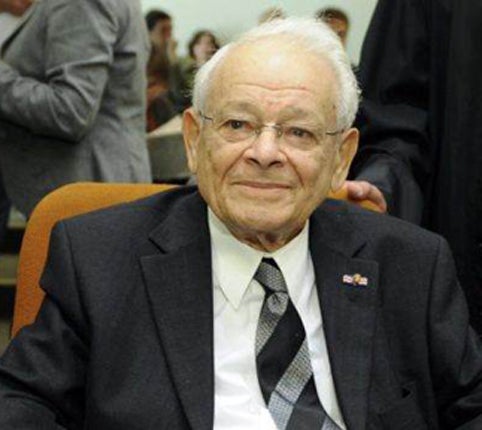A survivor's view: 'We had heard what went on there, but we refused to believe it'

More than 250,000 predominantly Jewish victims of the Nazis' so-called "Final Solution" were systematically murdered in the Sobibor death camp set up near the city of Lubin in German-occupied Poland in 1942.
Unlike the death camp at Auschwitz, where prisoners were made to work before being gassed, Sobibor and the camps at Treblinka and Belzec in the German-held east, were designed for the instant extermination of their victims.
Train transports with thousands of Jews collected in round-ups throughout Europe were sent to the three camps. The victims were herded out of cattle wagons by SS guards with whips. Those who were too weak to work were sent immediately to a so-called sick bay, often decorated with a red cross, where they were shot.
Jews from eastern Europe were sent to the gas chambers immediately, but those from western Europe were duped into believing that they had come to work and told that they first had to shower.
Whole families were then marched down the cynically named "road to heaven". At the end of it, they were pushed into changing rooms, stripped of their clothes and possessions and shaved. The collected hair was used in factories in the Nazi Reich to make blankets and socks for U-Boat crews. SS guards then drove their victims into the gas chambers. Often they used bayonets and whips to complete the task.
"The camp gate opened to reveal what looked like a beautiful village," recalled 83-year-old Thomas Blatt, one of the two survivors of Sobibor. "We had heard what went on in there but we refused to believe it. But I knew better. I was 15 and I realised I was going to die."
Mr Blatt was 15 when he worked at Sobibor shaving prisoners before they were sent to the gas chambers. "They mistreated us, they shot the old and sick new arrivals who couldn't walk any more," he said of the SS guards. "They were the ones who drove the naked people into the gas chambers with their bayonets. They would come back with splashes of blood on their boots," he told The Independent last year. Mr Blatt saw his father being beaten to death with a club.
He lost all his family in Sobibor. "I remember the whine of the generator that started the engine which made the gas that killed them. I remember standing and listening to the muffled screams and knowing that men, women and children were dying in agony as I was sorting their clothes," he said.
Mr Blatt was one of a group of Sobibor inmates who managed to escape. Towards the end of 1943, the Nazi authorities began shutting down the three extermination camps. Thousands of inmates were slaughtered in an operation nicknamed "harvest festival".
Subscribe to Independent Premium to bookmark this article
Want to bookmark your favourite articles and stories to read or reference later? Start your Independent Premium subscription today.

Join our commenting forum
Join thought-provoking conversations, follow other Independent readers and see their replies